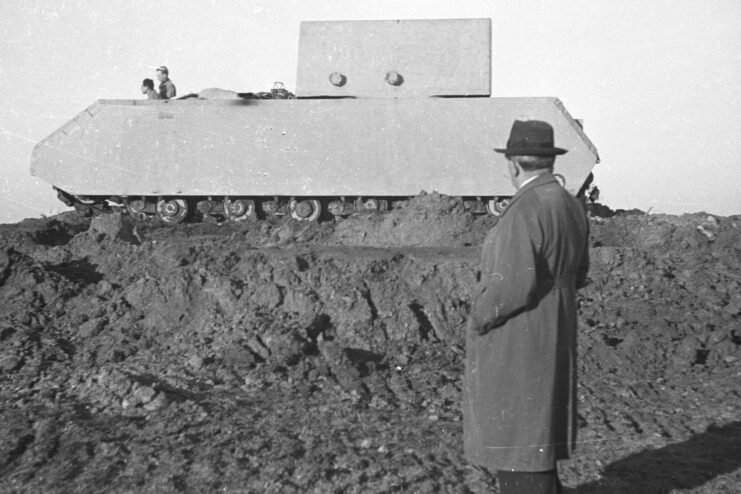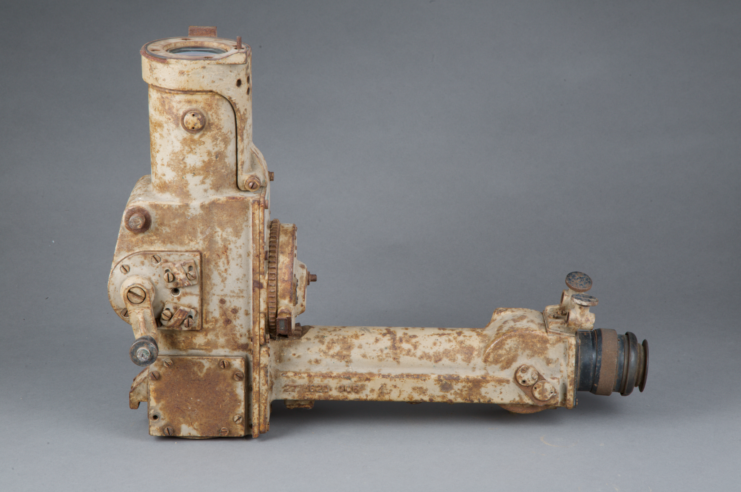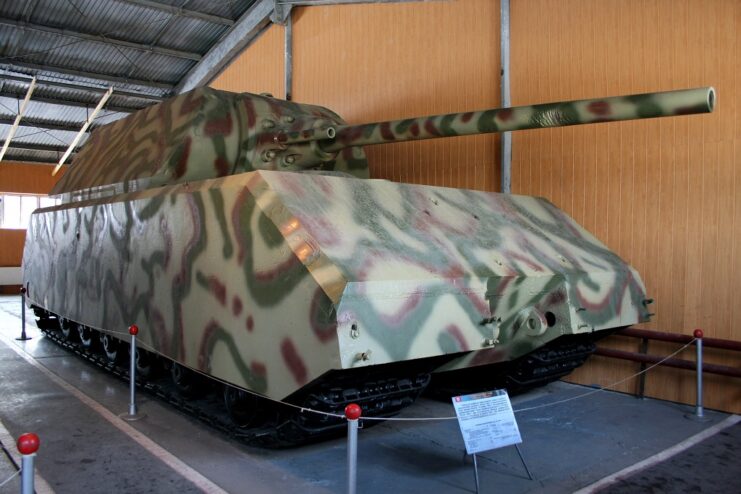The Tank Museum Puts Rare Maus Tank Optical Sight On Display
The 188-ton Panzerkampfwagen VIII Maus was intended to be Germany’s answer to the advanced tank technology being utilized throughout Europe by the Allies. Only two were produced before the end of World War II – one was destroyed and the other taken to the Soviet Union by the Red Army. An optical sight from one of the Maus prototypes somehow found its way to The Tank Museum in Bovington, England, where it’s since been put on display.

According to The Tank Museum, the optical sight had remained unidentified in its archives for years, as it didn’t meet standard references. All that was known about it was that it was part of an optics collection from Germany that had been delivered to the United Kingdom following World War II.
“This sight is a very rare item and likely the only part of the original Maus tank programme to end up in Britain,” reads a press release from the museum. “The sight has the three-letter code blc which indicates Carl Zeiss. Zeiss is recorded as having delivered a model of the sight in June of 1943 to the Maus project for incorporation in the wooden turret mock-up.”
It’s currently unknown from where the optical sight was collected.

The Panzer VIII Maus, the heaviest fully-enclosed armored fighting vehicle ever developed, was completed by the Germans in 1944. While two were said to have been produced prior to the end of the Second World War, the actual total was a single turret and two hulls.
The Maus‘ origins date back to 1942, when the Führer approved the development of a 100-ton tank that could counter those equipped by the Red Army. The hope was that the tank would be able to break through enemy fortifications without suffering damage itself.
The first prototype, dubbed “V1,” was produced without a turret and underwent preliminary testing in December 1943. It was during this time that it was discovered the Maus was too heavy to cross bridges and, as such, would need the ability to drive through streams and rivers. This would be accomplished by pairing up the tanks.
The “V2” prototype was armed. It featured a 12.8 cm Pak 44-inspired anti-tank gun as its main armament and both a 75 mm howitzer-like tank gun and MG 34 machine gun as its secondary weapons. With these, it had the ability to break through the armor of any Allied-manned tank.
The two pre-production hulls were sent to Kummersdorf for testing in late 1944 and were blown up by the advancing Red Army early the following year. The first fared better than the second, which had ammunition stowed in it, so the Soviets paired the V1 with the turret equipped by the V2. The vehicle was transported to Moscow for further testing, and it’s currently on display at the Russian Tank Museum in Kubinka.

Following the war, the Allies conducted a search throughout Germany for information regarding new weaponry, technologies and production techniques. As The Tank Museum explains, “This included interviewing German scientists and industrialists such as Ferdinand Porsche and taking away paperwork, designs, and examples of the materials and items captured.”
More from us: World’s Only Running Nashorn Tank Destroyer to Make UK Debut at TankFest 2023
The Panzer VIII Maus‘ optical sight is currently on display at The Tank Museum, along with the first round ever fired by the German heavy tank.
The post The Tank Museum Puts Rare Maus Tank Optical Sight On Display appeared first on warhistoryonline.
Post a Comment
0 Comments